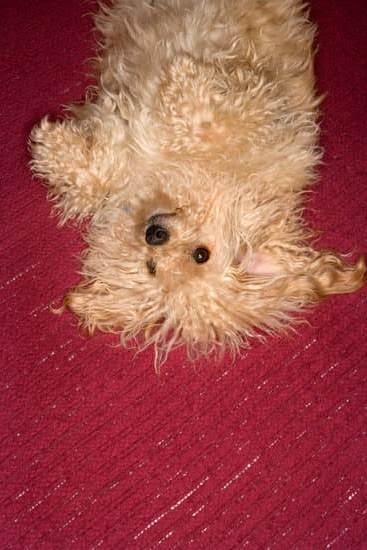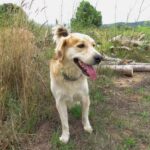Introduction
Leash training your hyper dog is an essential part of being a responsible pet owner. Having a leash-trained dog makes it much easier and more convenient to take them for walks, to the park or anywhere else outside that you’d like to bring them. Not only can having them leashed keep them safe, it will also help keep them under control when out in public, as they’ll be less likely to wander off and get into trouble. Additionally, it means far less stress on the owner, who won’t have to constantly worry about their dog running away from them or getting distracted by other animals. Training a hyper dog may take some patience and dedication but with the right methods and techniques, it’s possible for any pooch!
Preparing For Leash Training
Before beginning leash training, it is important to take the time to prepare and make sure you have all of the necessary materials. There are a few steps that should be taken in order to accomplish this process.
First, you will need to purchase the right type of equipment for your dog. It should fit your pet comfortably, while being strong enough that it won’t easily break or come loose from your pup’s collar or harness. You may want to consider a flat buckle-style collar and lead or a retractable lead. Both of these types of equipment come in various sizes and materials, allowing for maximum comfort for your furry friend.
Next, you will need to set up an area that is both comfortable for your pup as well as free from distractions where leash training can take place. This could be inside your home or in your yard; however, it is key to find a place away from other pets and people who may be too distracting for successful leash training sessions.
Once the area has been selected and you have the appropriate equipment, it is important to train consistently with plenty of positive reinforcement techniques such as compliments and treats. This can help create an encouraging environment in which more effective learning occurs during each session.
Getting Started
The first step in leash training a hyper dog is to safely introduce the leash to them. Start off slowly and gradually by letting your dog investigate the object. Show them that there’s nothing to be afraid of, allowing them to sniff, paw and lick the leash if they wish. If they don‘t show any fear, you may proceed to putting the collar or harness around their neck but not too tightly. While asking your pup to “sit” is preferable, give them time if they are otherwise occupied and just keep it loose for a few minutes until they are accustomed to how it feels. Once your pooch is comfortable with their collar or harness on, you can attach the leash without overwhelming them.
Next, take a few steps away from your dog and call their name in a friendly manner so that he will come towards you naturally instead of getting dragged along with the leash forcefully. Offering frequent treat rewards whenever your dog follows commands will help reinforce that positive behavior while establishing trust between you two. When going outdoors for practice walks, use verbal cues such as “heel” or “follow me” when walking ahead of your pup so he will learn how to stay close-by and still pay attention despite all the distractions that come with being out in public; like people, animals and smells. With patience and constant reinforcement, your puppy will eventually understand how walking on leash should be done and thus making all future excursions much more enjoyable!
Development
Leash training a hyper dog takes patience and commitment. The first step is to clarify expectations for the dog, such as teaching them to recognize verbal cues and enrolling in formal obedience classes. This helps the dog understand what will be expected from them during their walks, as well as how to safely interact with other people and animals.
Once the expectations are set, it’s important to gradually increase the length of your daily walks. Doing this slowly will help your pup build up endurance while allowing them time to adjust to their new routine. Be sure to start out with short sessions at slow speeds so that your pooch doesn’t become over-stimulated or overwhelmed during their walks. If possible, try taking multiple shorter walks throughout the day instead of one long walk which can help manage excessive energy levels and make leash training easier on both you and your pup. During each walk, use rewards along the way such as treats or toys to keep your pup focused on listening and following commands rather than getting distracted by other activities or sights around them. Additionally, if you don’t have a backyard for play time, consider adding in off-leash activities for your pup such as trips to a dog park or playing fetch in an open field under close supervision. By providing physical activity in safe spaces and reinforcing positive behaviors on daily walks, hyper pups can learn leash behavior more successfully and enjoy their exercise routine too!
Tips For Success
One of the keys to leash training an especially hyper dog is establishing a positive relationship between you and your pup. Start with introducing them to the leash and collar at their own pace. Allow them to sniff, lick, and explore the items before placing them on their body. Place treats near the leash or even let them take treats from your hand with it flat against their chest. Doing this will create positive associations with the items and build trust between you and your dog.
Once your pet has become comfortable wearing the collar and leash, you can begin teaching how to actually wear it out on walks. When first starting out, practice in an enclosed area such as a backyard or fenced park so they won’t be able to wander too far away. Initially keep verbal commands simple such as “sit” or “stay” and reward with verbal praise, a treat, or favorite toy when they obey correctly. Also, make sure to reward good behavior during each outing by reinforcing (e.g., verbal praise) while making sure not to punish any mistakes (i.e., pulling is natural for dogs so don’t scold if it happens). Not only will this help avoiding creating negative connotations for being on-leash but also helps establish clear lines of communication between you and your pet that should extend outside of just walking behaviors. Remembering consistency is key for successful leash training; whether that’s having regular outings with predictable rewards after staying on-leash or ensuring consistency in the commands used – establish clearly what is expected from them each time they go out for a walk and initial progress should be made quickly!
Common Issues To Address
When leash training a hyper dog, it is important to understand both the potential distractions as well as the potential issues that may arise. Distractions come in many forms and can vary from person to person, place to place. Common distractions include loud noises or sudden movements; other dogs barking, chasing, or playing; food; the presence of strangers or unfamiliar people; and the smell of animals. Each of these may be attractive or appealing to a hyperdog, potentially leading them astray from their training.
Identifying potential distractions is key to ensuring successful leash training with a hyperdog. Being aware of what may draw their attention away allows you to mitigate these issues and help keep your pup focused on their training at hand. If a distraction arises due to noise or movement, use positive language and reinforcement when redirecting your dog’s focus back to you. Try not to raise your voice in anger – instead, provide comforting words and reward them for staying near you. Similarly, if another canine nearby is causing distraction then consider taking your pup into an area where they are less present or introducing them slowly while providing treats and praise during the introduction process. Additionally, make sure that there are no food items visible in sight range as these can easily pique curiosity – especially in a hyper dog! In order for your pup to stay engaged with your leash session it’s important provide them with plenty of physical and mental stimulation throughout – this could be through playtime beforehand so they’re not overexcited or through offering treats during walks/training if appropriate behavior is displayed. By properly identifying and understanding possible sources of distraction you will have a better understanding of how best deal with them during leash walks/training sessions with your hyper dog!
Wrapping Up
Once you and your dog have mastered basic leash training, you can start expanding on their skills. To celebrate the progress they’ve made and motivate them to keep learning, reward them with treats or fuss whenever they respond correctly when taking a walk together. Consider setting short-term goals such as mastering longer distances, or encouraging their curious nature by allowing them to smell plants and trees while on-leash unique experiences–make sure these are always supervised by an adult. You can also continue to work on improving behavior when they encounter potential triggers like other dogs or loud noises. Finally, don’t forget to take time every now and again to refresh the lessons learned in basic leash training. Regular practice sessions like revisiting sit and heel commands will keep their recall strong and help ensure future walks with your unrestrained dog remain stress-free. As long as it’s kept up regularly each month, with proper motivation from you, your hyper pup should be leaping at the chance for some leash training fun!

Welcome to the blog! I am a professional dog trainer and have been working with dogs for many years. In this blog, I will be discussing various topics related to dog training, including tips, tricks, and advice. I hope you find this information helpful and informative. Thanks for reading!





